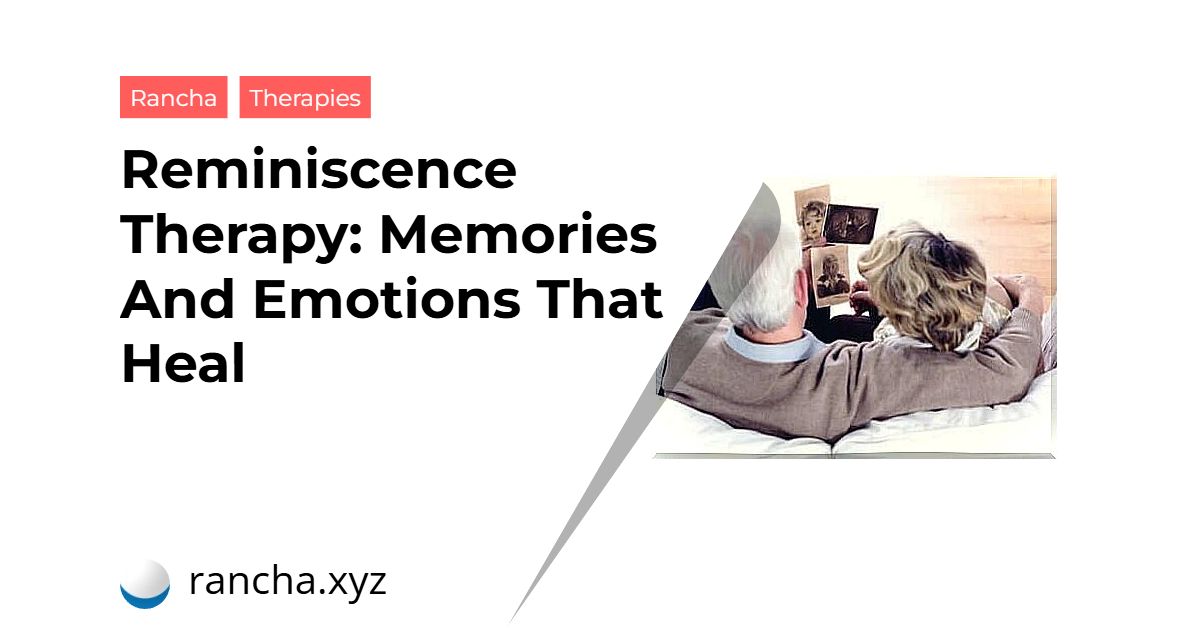Reminiscence therapy stands as a very positive approach within the context of gerontology. It is a way to integrate the past with the present through memories and emotions. This somehow restores the person to his vitality and reality.
In this way, it is possible to strengthen the identity and illuminate the meaning of life by rescuing what we were yesterday, even solving outstanding issues.
One of the biggest challenges facing our society today is, without a doubt, the aging of the population. Life expectancy, as we know, is increasing.
Our medical and health resources, lifestyle and diet have enabled us to reach much older ages.
Now, something that in itself would seem highly positive also carries a very significant challenge: is there any way to reach these ages with greater psychological health?
We know that Alzheimer’s and other dementias are conditions that completely undermine the quality of life of this population. However, gerontology also faces other problems, such as loneliness or dissatisfaction with life.
We often see people who end their professional life and retire at 60, 65 or 70 years old, but still have about 20 or more years to live. The way of looking at aging is changing, considering ages that are much older as we now have much older elderly people.
Therefore, many people are forced to rethink their old age and their future, because the way their own parents once faced the third phase of life seems to no longer make sense.

Reminiscence therapy: concepts and strategies
The celebrated geriatrician and psychiatrist Robert Butler (1963) was the first to discover the reminiscence exercise as a useful and effective psychological tool for the elderly. It is a way of reviewing life itself and adapting to each cycle of our existence.
He described it as “a return to awareness of past experiences and more specifically to unresolved problems and conflicts, to look at them in perspective and give them new meaning ”.
Somehow, and if you think about it, this exercise is something we do very often throughout the different stages of our lives. However, this approach has been shown to be very beneficial especially when we reach old age.
Furthermore, studies such as those published in the Revista de Neurologia, carried out by doctors Irazoki and García-Casal, reveal that reminiscence therapy is also very significant for the cognitive processes that take place in people with dementia.
Let’s see more details.
What does this therapy consist of?
Reminiscence therapy is a technique of cognitive stimulation. Thus, according to Carvallo, Arroyo, Portero and Ruíz (2012) it is a set of neuropsychological intervention activities that seek to enhance neuroplasticity in the elderly – which is especially useful in processes of cognitive impairment.
- This type of therapy can be developed individually, with a single person, or also in a group.
- Photographs are used, or it is also possible to directly invite the person to orally evoke moments from their past. It is possible to work with episodic memory (personal and specific memories such as the birth of a child, work, travels…), as well as with semantic memory (relevant historical data that we can talk about).
- The therapist should promote the emotional experience of each memory, as well as encourage the person to work their expressive, comprehensive language, focused attention…
The objective, as we can imagine, is to promote a review of life, reaching an existential meaning in view of the experience. It also seeks to resolve personal conflicts and achieve adequate internal peace.

What can we achieve with reminiscence therapy?
When we work or share time with elderly people, there is one thing that often happens. Not everyone is aware of the exceptional feats they have accomplished in life. Often, their eyes are only situated in the present, in which, perhaps, loneliness weighs too much, as well as illness and pain.
It is, therefore, necessary to make the elderly become aware of their achievements, their successes, the children they gave to the world, the difficulties they managed to overcome, the work that was done, the happiness they felt from the most simple…
Getting them to reconnect with what they were, what used to get a smile or even what was once such a big concern and now lacks relevance, is the key to rebuilding and dignifying their person.
- Reminiscence therapy strengthens the elder’s identity.
- Helps manage grief and unresolved issues from the past.
- Improves self-esteem.
- It reduces vital anguish and improves adaptation to the present.
- It optimizes the family relationship by finding that vital meaning so that somehow the result is remembering how important they are to children, grandchildren, siblings, friends, etc.

In conclusion, as we have seen, reminiscence therapy is a great intervention tool in patients with cognitive impairment.
It is a way to slow down the process as much as possible, to improve emotional states and to contribute to improving the quality of life of the elderly.
However, returning to what we said at the beginning, it should also be noted that we undoubtedly need other approaches, strategies and types of assistance. Our future population will have a very broad sector of seniors and older adults.
They deserve the best attention and tools to continue enjoying their daily lives in the best way and with the best assistance.
It is not necessary to just entertain the retiree or retiree. We must create new projects that bring more dignity to them.
 rancha.xyz Be free to choose their own route to self-knowledge, health and balance of body and soul.
rancha.xyz Be free to choose their own route to self-knowledge, health and balance of body and soul.




